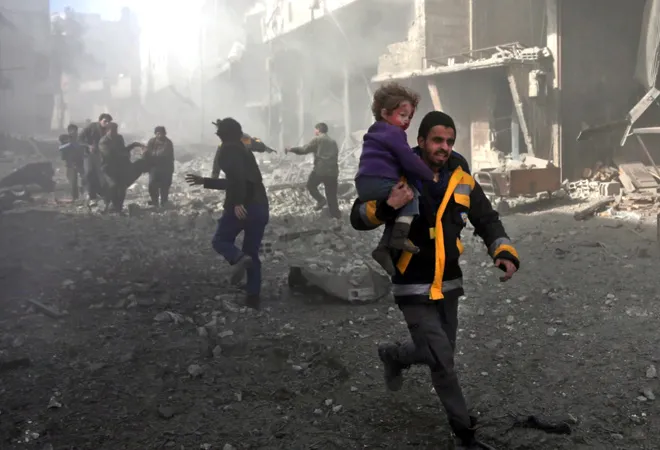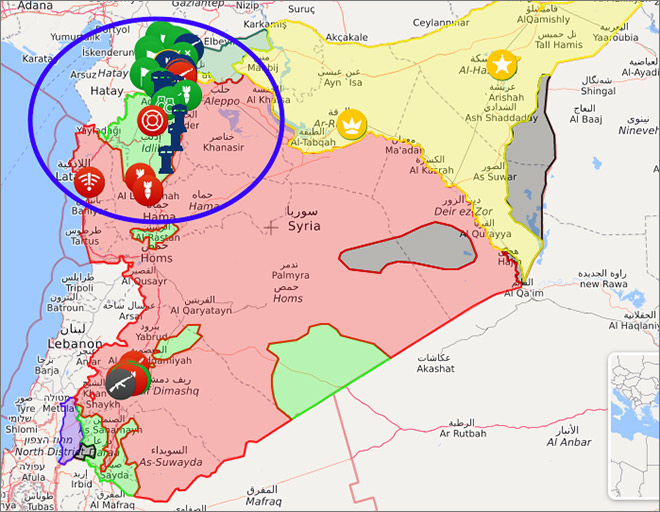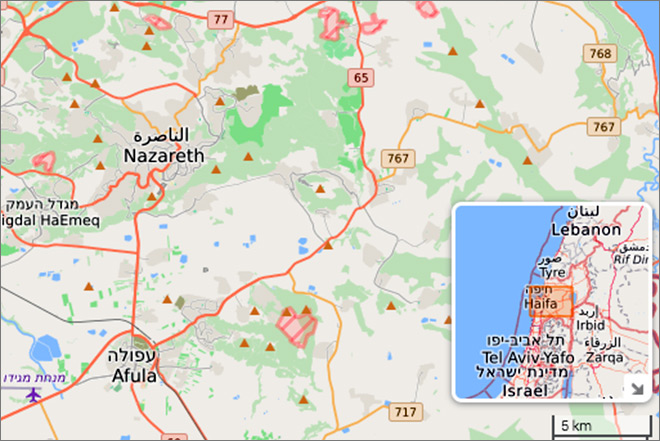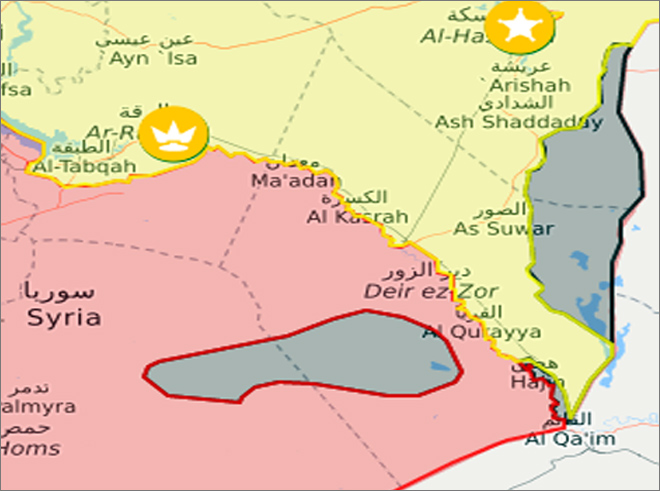
On January 27, reports surfaced of a suicide attack conducted by a female member of the Kurdish YPG (Yekîneyên Parastina Gel, or the People’s Protection Units) against the advancing Turkish military units in northern Syria’s Afrin region. The twenty-year-old Kurdish female fighter, Zuluh Hemo, was a member of the Women’s Protection Unit, a celebrated all-woman combat group that found fame in their efforts to defeat the ISIS. Hemo’s act was the first such suicide bombing by the YPG, a group that got both military and financial backing by the US and its NATO allies, bringing Washington into the awkward position of aiding a group that commits suicide attacks.
Over the past few weeks, Turkey has deployed its military assets around the north-eastern Syrian town of Afrin on the back of the argument that it is protecting its borders and sovereignty from Kurdish terrorist organisations, particularly the Kurdistan Workers’ Party (PKK), which Ankara views as its biggest threat.
Turkish President Recep Erdogan’s policies towards the Syrian war has always revolved around the Kurdish question, and not directly on the threat posed by the so-called Islamic State. Initial analysis of the development of the ISIS human capital, specifically the joining of foreign fighters, suggested leeway offered to them on the Turkish border in what could be seen as some sort of counter-measure to take on the PKK and other such Kurdish factions. The narratives based around Kurdish threats against Turkish interests are not all fable; the Erdogan regime’s tactics to address the same, however, have created a geo-political hotpot of crisscrossing interests where Turkey, a NATO ally of the US, is collaborating with Russia over its operations against the Kurds.
Moscow, with whose blessing President Bashar al-Assad’s government in Damascus has held on to power throughout the conflict, meanwhile, reportedly gave way to Turkish troops in Afrin and nearby areas, paving the way for Turkey’s military assault. To make matters more complicated, the Syrian army has found some common ground with the YPG to enter Afrin in order to protect the enclave from Turkish activities. Prior to this, the Turkish military was seen in unverified photos holding joint-patrols with Hay’at Tahrir al-Sham, a supposed breakaway Islamist group from Al Qaeda, in the region around Idlib. However, analysts studying the region believe it may still have ties with Al Qaeda, masquerading as an independent entity for regional gains and to unify certain other rebel groups.
These developments have left the American policy on Syria, which by itself is ad-hoc in nature with little to no long-term planning beyond the demise of ISIS, in a bind. The Trump administration is looking to avoid a direct confrontation with President Erdogan, with Turkey not only being a regional power, but an important foothold for American presence in the Middle East. Isolating Turkey in any way or form would push it firmly into an alliance with Russia, which has already made significant inroads with Turkey despite the 2015 shooting of a Russian Su 25 by a Turkish F-16 in 2015 and the assassination of Moscow’s Ambassador to Ankara, Andrei Karlov, at the hands of an off-duty Turkish police officer who was angry about Russia’s air campaign in Aleppo.
Despite these setbacks, Russia and Turkey mended ties and the former agreed to sell Turkey the S-400 surface-to-air batteries in a deal worth more than $2.5 billion, giving Turkey more military strength, and Russia much needed cash inflow. To make itself relevant again, the US has shown signs of backing Turkey’s campaign in Afrin till a certain level as US Secretary of State Rex Tillerson met his Turkish counterpart Mevlut Cavusoglu.
The YPG, meanwhile, feeling a sense of alienation has started to take matters in its own hands, as a US withdrawal of support looks imminent. Other than looking to take help of the Syrian army and perhaps even the Shiite militias backed by Iran, the YPG, led by the aim of survivability, may take the form of standards of warfare closer to those practiced by the PKK. While Turkey has maintained that no difference exists between the YPG and PKK, and perhaps it may be true that the former may have had PKK soldiers in its rank at some point, the fact remains that despite commonalities in what end the Kurdish struggle is aimed at, there are stark differences within the Kurdish factions on almost every cohesive approach to the question of independence and autonomy. The Kurds have already gone through a poorly timed referendum, despite no international support, which led to further internal discrepancies and ouster of the president of Iraqi Kurdistan, Masoud Barzani.

(The northern clusters show activity in the regions of Idlib, Afrin and Manbij with the blue towers representing new Turkish posts deep into northeastern Syria. The red represents the Syrian army, yellow the Kurds, green in the north largely represents Hay’at Tahrir al-Sham, in the south Shiite pro-Iran militias and the grey is for ISIS (February 2018))
The other fronts
While northeastern Syria is going through a fresh upheaval led by Turkey, the Syrian-Israeli borders, not far from the capital Damascus, are witnessing their own turmoil. On 10 February, Israeli Apache gunship helicopters shot down an Iran manufactured drone. In what is seen as the retaliation, Syrian air defence systems shot down an Israeli F-16 fighter aircraft, a major event considering the age and viability of Syrian air defence systems. While Damascus maintains that the attack was to warn Israel against constant violation of the Syrian sovereignty, some analysts believe the F-16 was downed as part of an ambush, with Syrian defence systems targeting the one aircraft and not others flying in the vicinity. The pilots escaped with injuries. Israel’s Prime Minister Benjamin Netanyahu, speaking at the Munich Security Conference, brandished a piece of the shot down Iranian drone, warning Tehran of any further misadventures testing his country’s patience. And all this while Iran’s foreign minister Javad Zarif was in the room.

(Israel’s Nazareth region around which as per rough estimations the Israeli F-16 crashed after being shot at by Syrian armed forces (February 2018))
Israel has made it clear that any buildup of the Iran backed militias on its borders will be dealt with swiftly. Tehran has poured in immense amount of resources into its campaign in Syria, and has worked to have a significantly more ingrained and lasting presence in the future of the country than Russia which, as per its needs, will have permanent military base access in Latakia (Hmeimim air base) and naval facilities in the Tartus that will be able to host up to 11 warships, including nuclear vessels, giving Russia a strong presence in the Mediterranean.
Besides, Syria and Russia are also continuing military operations in Eastern Ghouta, home to an inter-insurgency conflict over the past few years. While the conflict has gone relatively under the radar compared to the larger Syrian war narrative, over just the past four days, relentless bombings have reportedly killed more than 300 people, leaving thousands of others without food or medical aid.
Opportunity for an ISIS resurgence?
The tectonic change in the nature of the Syrian conflict, moving from most parties concentrating on the destruction of the so-called “caliphate” of the ISIS to turning on each other for regional supremacy was not an unknown prophecy. Analysts and researchers studying the conflict have more than often highlighted that contingency plans for a post-ISIS Syrian peace process would be next to impossible due to the fragmentation of interest groups, foreign and local, arming against each other. While the ISIS was the magnet that attracted everyone from Russia and the US to pro-Al Qaeda factions to take them on, their “defeat” has now taken the spotlight away. The group still claims it has more than 10,000 fighters in its armory, and as of now, has largely concentrated on smaller attacks and operating out of the country’s desert regions.

(As of February 2018, the grey areas represent ISIS influence zones, concentrated around the desert regions of Deir-ez-Zor and the Syria – Iraq border).
The loss of spotlight and expanding wars between other interest groups in Syria could give the ISIS enough space for resurgence. While it has lost access to much of its foreign fighters pool, who not only added numbers but also brought in academic and technical expertise, a build-up supported by a move away from geographic control and more towards traditional insurgency tactics such as guerilla warfare is inevitable.
Failure of peace talks and beyond
Both the Western-led and United Nations supported Geneva peace talks, and the Russia-Turkey led Astana talks have proven to be momentous failures, becoming mere events and bystanders to the violence besieging thousands of Syrians. A lot of what both the Geneva and Astana processes disagree on are points of contention responsible for elongating this conflict further over the past years. Both multilateral process and bilateral interventions, diplomatic and military, seem to have only made the situation worse in Syria. The current distribution of the country into influence enclaves gives some sort of access to temporary cease-fires, however the probability of these come more from intra-party talks and negotiations than external interventions from the likes of Geneva and Astana.
The DNA of the Syrian war in itself offers a good history of why the conflict is staring down as an indefinite struggle. The ISIS spearheaded the American involvement in 2014, while Russia entered in 2015 to take on not just the ISIS but Al-Nusra Front (Al Qaeda, former HTS), Syrian National Coalition, Army of Conquest etc. In 2016, Turkey entered to take on the YPG, which was created because of the US intervention in 2014, which in itself was due to the Turkish policies of allowing jihadists as buffer against the Kurds. Turkish intervention has only been made possible due to Russia, which together counter American policies in Syria, while Washington is forced to protect Turkish stance against the Kurds.
The coming year is going to be no easier for the conflict, as it is expected to go deeper into a quagmire. The world has more questions than answers to the war, a narrative that does not bode well for the future of the Syrian people.
The views expressed above belong to the author(s). ORF research and analyses now available on Telegram! Click here to access our curated content — blogs, longforms and interviews.







 PREV
PREV



